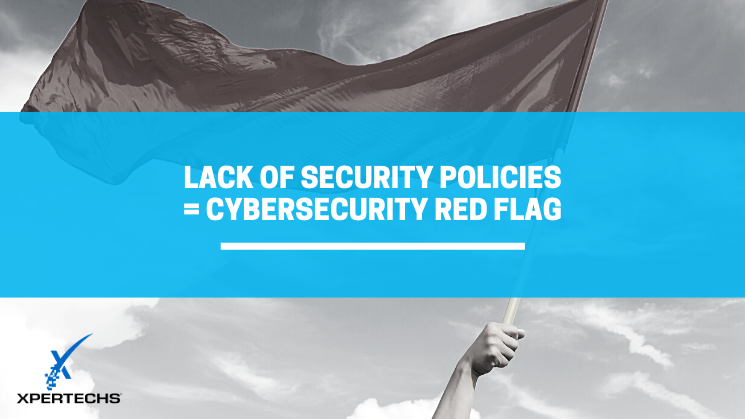Lack of Security Policies = Cybersecurity Red Flag

If you need to follow regulatory compliance for protecting information, you probably already know that a good chunk of your cybersecurity strategy is in deciding how you’re going to control access to information with security policies. The creation of security policies, however, is important for any business that wants to provide consistency in how they handle data.
Documented Policies Guide Decisions and Provide Controls
Security policies guide decisions that employees make in ordinary and extraordinary circumstances, and provides assurance that your organization is properly managing risk. Lack of these documents and the procedures that they detail, can be a sign that you’re not managing cyber risk as well as you should be. That’s important when you want to get the best business outcomes from security, and the best rates on cyber security insurance.
Security Policies Answer Questions
Think of security policies as answers to questions that may come up in day to day or crisis situations. By answering these questions ahead of time, you can communicate to employees in detail their role in safeguarding access to company data and IT systems, and why everyone is individually responsible for maintaining security.
Find Out If You’re Missing An Important Security Layer
Read through the following 17 questions to get an idea of how security policies work. These questions represent 17 different categories of policies that are components of a comprehensive IT security plan. If you don’t have a documented answer to any of the questions below, it’s a sign that you’re probably not giving your people the guidance that they need to maintain a high level of security.
Jot down your answers and use them to jump start discussion about security policies at your organization:
- What activities are allowed on our company IT systems and what are not?
- What devices need anti-malware and antivirus software?
- What’s our plan for restoring business operations after an outage, crisis or disaster?
- How much data can we afford to lose if we have a system outage or breach?
- Does all information flow need to be encrypted?
- How do we communicate to employees their role in security?
- How will we know if gaps in our security emerge?
- How long will we store email data for both current and terminated employees?
- How are we going to enforce good password management?
- How do we make sure that all software and operating systems have the latest security patches?
- What role does physical security play in overall cybersecurity?
- What’s the best way to give employees and vendors remote access to our network?
- What should we do to limit and control data brought in and taken out of our systems with USB drives?
- What are doing to help employees recognize potential social engineering attacks?
- How should we dispose of old hardware?
- What controls do we need in place when we allow vendors access to our network?
- What tools will we use to evaluate technical security layers?
Incomplete Answers Reveal Gaps in Risk Management
The most effective cybersecurity strategy consists of layers of both technical and non-technical tactics. If you aren’t sure if you have suitable policies in place to guide operations and employee behavior, then you most likely have some gaps in how you’re managing the risk of cyber attack.
Need an objective opinion on your security policies? Get in touch and we’d be happy to review what you have and make recommendations if there are gaps.
